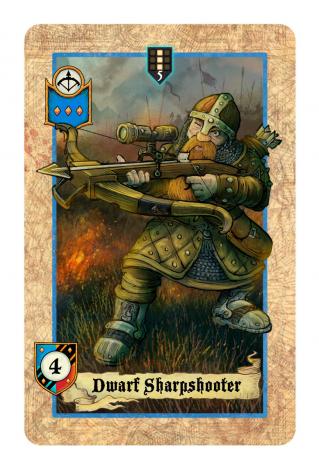 The advantage of having to spend several days in hospital with nothing to do but wait for things to happen is that you get a chance to actually play some of those games that have been gathering dust in the cupboard since the last Dragonmeet. We played a lot of Fluxx and some Convoluted, but mostly we played Lords of War by Black Box Games
The advantage of having to spend several days in hospital with nothing to do but wait for things to happen is that you get a chance to actually play some of those games that have been gathering dust in the cupboard since the last Dragonmeet. We played a lot of Fluxx and some Convoluted, but mostly we played Lords of War by Black Box Games

I’m not into collectible card games – the idea of paying ever-increasing amounts of money to build a more powerful deck, competing against people doing exactly the same. Lords of War doesn’t do that – the game consists of a tiled board and two decks of cards, one of dwarves and one of orcs. Each player takes a deck, deals out a few cards, places one of them at a predetermined point on the board, and the game begins. No deck-building, no pay-to-compete, just tactics and a bit of luck.
 A player’s turn consists of three stages – deployment, engagement and reinforcement. In the deployment phase you – yes, you guessed it – play a card. Each unit can attack in one or more directions, indicated by numbered arrows around the edge of the card. The number on each arrow indicates the amount of damage it does in that direction. Each unit also has a defence value – the number in the shield. That denotes how much damage it takes to kill it.
A player’s turn consists of three stages – deployment, engagement and reinforcement. In the deployment phase you – yes, you guessed it – play a card. Each unit can attack in one or more directions, indicated by numbered arrows around the edge of the card. The number on each arrow indicates the amount of damage it does in that direction. Each unit also has a defence value – the number in the shield. That denotes how much damage it takes to kill it.
Most units are melee, which must be placed so they are attacking an enemy unit, while some are ranged, and can be placed adjacent to a friendly unit and deal damage to any one of a number of marked tiles.
 Then follows engagement. Each unit attacks at once; melee units deal damage in every indicated direction, while ranged units nominate a single target. Each unit receiving more damage than its defence value is killed and removed from the board.
Then follows engagement. Each unit attacks at once; melee units deal damage in every indicated direction, while ranged units nominate a single target. Each unit receiving more damage than its defence value is killed and removed from the board.
Finally, reinforcement. The player can either draw a random card from the deck or withdraw a unit from the board, so long as it was not involved in any combat this turn and is not currently engaged by an enemy.
Then the other player has a go, and so the game progresses. It ends when one player has killed 20 of their opponent’s units, or four commander-level units.
Like all the best games a relatively simple set of rules, easily learned, combine to create a fun experience with lots of replay value. Our first game went to the wire, both of us on 19 kills, next blood would determine the winner. In the second game, I conceded halfway through – we were even on kills but my wife had built an impenetrable line of ranged units at the base of the board, against which I simply couldn’t gain a foothold to build up the necessary power to take anything out.
It’s fair to say I suck at this game, but I enjoy playing it anyway, and I’m looking forward to the new Elves and Lizardmen decks.

